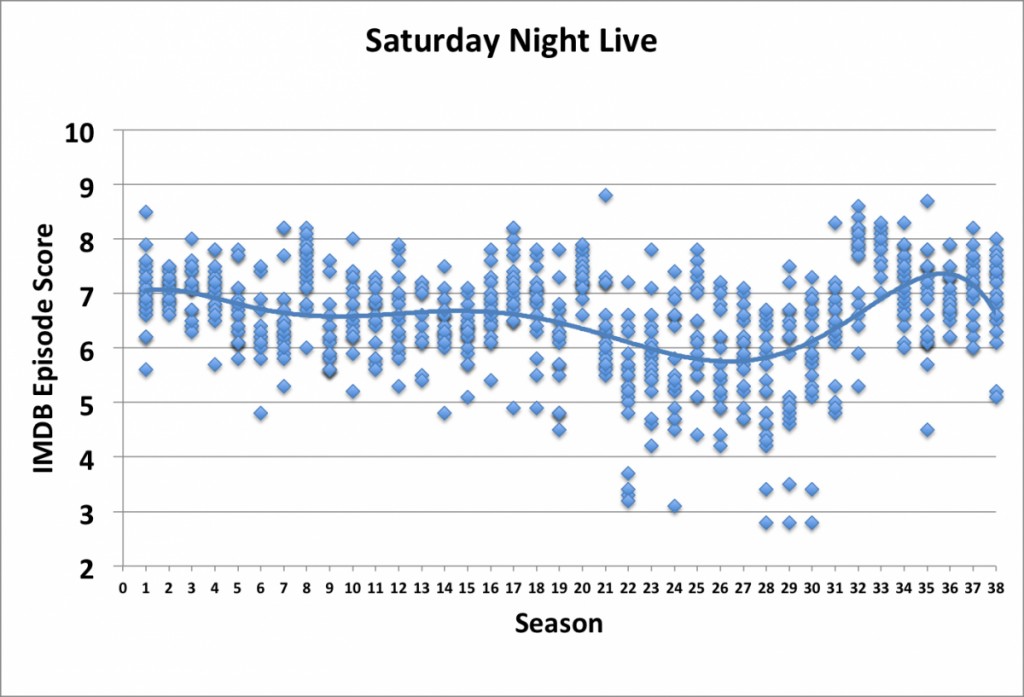Serial television is one of the most gruelling and demanding industries in all of show business. The amount of hard work and intense creative effort that goes into maintaining a television show’s quality is difficult for the average viewer to comprehend, but all too real for the showrunners, writers, and producers who bust their butts for months and years on end trying to keep their shows fresh, original, and of high caliber.
According to The New York Times, each year the top five networks order approximately 100 pilots at a total cost of roughly $200 million. About 66% of these quickly end up in the garbage bin, leaving only six or so that survive on each of the five networks. Within months, only one-to-four of these shows will be re-ordered for a second season on each network. It’s impressive enough in its own right for a show to make it through this punishing phase of survival of the fittest, but to survive for multiple seasons and rack up shelves of Emmy Awards year after year in the process is even more remarkable. In recent years, the television industry has witnessed an unprecedented Golden Age of programming as cable networks and the five legacy networks have realized that audiences crave increasingly complex season-spanning narrative arcs for the stories and their characters, inspired in great part by HBO’s The Sopranos, followed by such shows as Boardwalk Empire, American Horror Story, Breaking Bad, and many more. And along with this evolution towards Shakespearean complexity has come the rise of a sophisticated audience approval/rating system measured by such sites as Rotten Tomatoes and IMDb.
The team at Business Insider has crunched the audience approval ratings of IMDb for some of television’s greatest series, and compiled the following group of fascinating charts measuring the quality of these shows. In each chart you will notice each show is tracked by season, with diamonds indicating the audience quality rating of each season’s episode (some series such as The Sopranos only have six diamonds/episodes per season, while other shows such as Saturday Night Live have upwards of 16 diamonds/episodes per year). The higher the diamonds are on the bar, the higher the audience satisfaction with the episodes of that season. Each chart is intriguing, particularly the “line of best fit” which graphs the average approval rating for the series’ durations, but among the most fascinating would have to be Breaking Bad and the grandaddy of all shows being Saturday Night Live.
You can see the full group of charts by visiting BusinessInsider.com. And to learn much more about how the landscape of pilot season is beginning to change in the television industry, be sure to watch Charlie Rose’s interview with Kevin Spacey, producer and star of David Fincher’s critically acclaimed Netflix series House Of Cards. Listen as Spacey explains how he and Fincher successfully bypassed the outdated pilot system by teaming up with Netflix — a network which was more than happy to skip the expensive pilot process and jump directly into a full season order.
SEE ALSO: Watch Charlie Rose’s Fascinating Interview With Creator & Cast Of “Breaking Bad”
SEE ALSO: Judd Apatow’s 1990 Hypnotism Spec Script For “The Simpsons” Is Now Being Made
SEE ALSO: The Subversion Of Audience Expectations Has Led To A New & Unprecedented Golden Age Of Television


